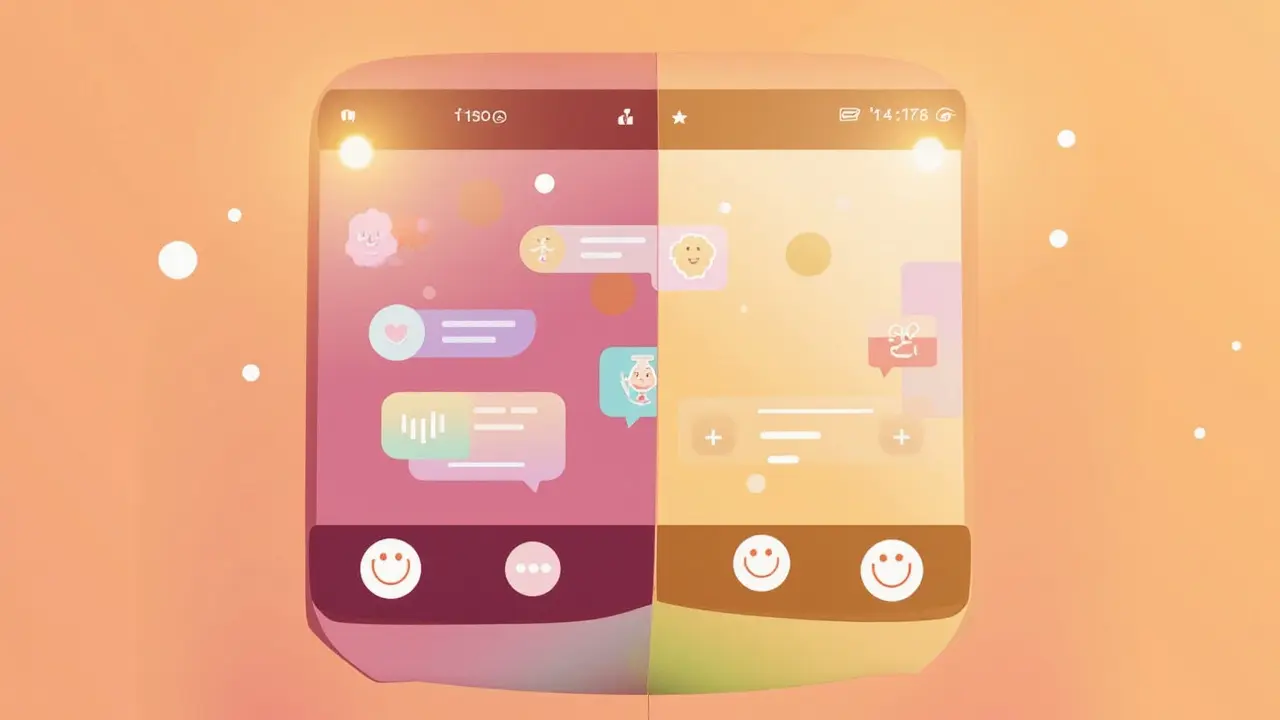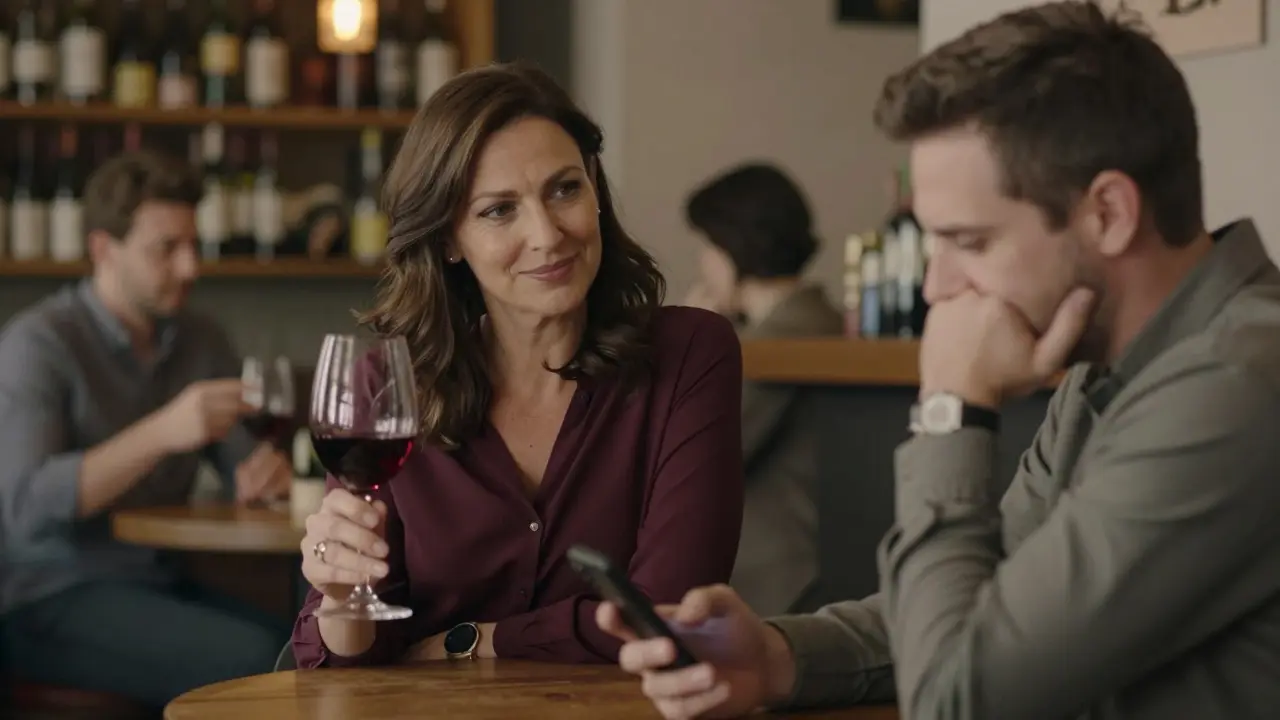Ever think you’re about to meet someone amazing online, and boom—a paywall pops up? Yeah, we’ve all stared at that “Subscribe to chat” button, wondering if swiping for love is about to drain our wallets. The reality is, dating apps love to toss out the ‘free’ label, but there’s usually a catch. Let’s unravel the real costs behind modern matchmaking apps. Why does everyone know at least one person who paid for a Tinder boost or an exclusive filter? These costs aren’t random—there’s a whole system baked in. Some will say you can find love for free online. Maybe. But let's look at what you’re really signing up for when you join a dating site.
Breaking Down What Dating Sites Cost—and Why
The first thing to know is that almost every dating app out there mentions being free. What they mean is: you can download the app and set up a basic profile at no charge. Want to see who liked you? Send unlimited messages? Skip the ads? That’s where the fees start showing up. Most people bump into these limits within a few days, especially if you’re hoping for more than endless swiping.
Let’s get specific. A study from Business of Apps found that in 2024, more than 370 million people worldwide used dating apps. Major platforms like Tinder, Bumble, and Hinge rake in billions each year—not from ads, but mostly from their premium subscriptions. Tinder Plus, Gold, and Platinum are classic examples, ranging from $10 to $40 a month depending on features. On Bumble, paying means seeing everyone who’s swiped right on you (instead of just waiting). Hinge “Preferred” lets you set fine-tuned filters and see who already liked your profile. And yes, some lesser-known platforms try to lock messaging or even profile views behind a paywall from the start.
Is it all just a money grab? Not exactly. These fees keep out bots and spammers, fund better safety features, and encourage people to actually respond. On free sites, you can get flooded with scammy or weird messages—if a site charges, there are fewer jokers and more serious daters.
What about genuinely free sites? OkCupid and Plenty of Fish still let you message without paying, but expect limited features and more ads. Plus, they’ll gently nudge you toward their premium tiers at every step (think of it like window shopping, but if you want to go inside, they ask for your card). Even the famed ‘free forever’ apps like Facebook Dating stand out for being supported by ad revenue, so while they won’t charge you, you basically pay with your attention and data.
Here’s another thing: dating sites change their pricing all the time, and those tempting “intro offers” can vanish after a month. Always check the fine print for auto-renewals—many folks get surprised by recurring fees that aren’t easy to cancel. Ask any friend who’s been single for a while; there’s always one horror story about a forgotten subscription draining their account for six months!
Key Reasons to Upgrade Your Dating App (or Not)
So when does it make sense to pay for a dating site? First off, paying cuts through the noise. You’ll see more real profiles, skip past time-wasters, and sometimes even get premium customer support. It’s not all about vanity—boosts or super likes put your profile in front of more people. According to Tinder, paid boosts can increase your visibility by up to 10 times, which means more matches fast.
People pay for privacy features, too. Some apps let you hide your profile from exes or coworkers for a little extra cash. Paying also unlocks filters for dealbreakers: if you’re only interested in people who don’t smoke or who want kids, the premium version helps you sort that out right away. In bigger cities, these small filters save hours—there are just too many profiles without them.
For single parents like me, time is gold. Paying lets you cut to the chase. Who wants to waste a week chatting with someone, only to find out their lifestyle doesn’t match yours? Premium apps often provide in-depth personality questions and more serious users. You’ll even spot the growth of “Elite” or “First Class” dating apps for pricey, highly vetted introductions—think Raya or The League, where entry alone can cost well over $1,000 a year.
On the flip side, there are times when paying is pointless. If you’re in a small town and there aren’t many profiles, upgrading won’t create new people to date. And if you’re just looking to casually browse or try online dating for the first time, start with the free version (many folks meet their match this way!). Just be ready for more ads and a slower search.
Types of Dating Sites and Apps—And What You Pay For
Not all dating sites charge in the same way, so here’s a quick cheat sheet that shows how different types operate:
- Freemium Apps: The most common model. Sign up for free, pay to unlock extra features like unlimited matches, seeing who liked you, or super likes. Examples: Tinder, Bumble, Hinge.
- Subscription-Only Sites: Some platforms only let paid users message or even see full profiles. Examples: Match.com, eHarmony, Elite Singles.
- Totally Free Sites: They exist, but are rare. OkCupid and Plenty of Fish come closest. These rely on ads and have lots of users, but fewer filters and more spam.
- Niche Sites: These target specific groups (single parents, dog lovers, mature singles). Some are free to join, but most lock key features behind a premium tier. e.g., SilverSingles for people 50+, Christian Mingle, or FarmersOnly.
- Exclusive/Vetted Services: For those wanting elite matchmaking, expect sky-high fees and waitlists. Raya, The League, and even luxury matchmakers operate here—sometimes with monthly fees above $50 or hefty annual charges.
What features are usually pay-only? Here’s some of what you unlock with your card:
- Seeing who viewed or liked your profile
- Sending unlimited or first messages (some apps limit messages if you’re unpaid)
- Adding video calls or voice messages
- Undoing a left swipe (second-chance swipes)
- Boosting your profile for visibility
- Using advanced search filters
- Ad-free browsing
- Priority customer support or profile verification
If you’re curious about constantly changing rates, dating app forums are full of real user screenshots showing pricing differences by age, city, and even gender. It’s wild—my friend in Berlin pays half what I do here in Atlanta. Watch out for the “dynamic pricing” trick: apps sometimes quietly offer lower prices to people who hesitate at checkout or to women vs. men.

Finding Dating Services—And Tips to Avoid Wasting Money
Most of us start with the apps everyone talks about. Download Tinder, Bumble, Hinge, OkCupid, and you’re in the game within a few minutes. If you’re after a certain crowd, do a quick Google search for niche apps (like HER for LGBTQ+ folks or Coffee Meets Bagel for curated matches every day). Read recent reviews, since features can change monthly and some apps fade out fast.
Think about your real needs: looking for a serious relationship or just testing the waters? If it’s serious, listings like Match.com and eHarmony tend to draw older, more committed crowds (but cost more). For younger ages or open dating, freemium apps have way bigger user pools. And if privacy is a concern, look for apps that let you block or hide from people you know (especially if your kids or coworkers are also on the apps—embarrassing!).
Here’s where people often overspend: buying one-month subscriptions again and again. If you go premium, check the multi-month options—they’re usually 40% cheaper per month. Just remember to cancel if you’re not using it (set a phone reminder).
If you’re in a big city: test out multiple apps at the same time. Most will start with free trials or let you message a few matches before asking for cash. Rotate through free trials and only stick with the one where you vibe with real matches. People who try more than one app report better results in less time, according to a 2024 Pew Research Center survey.
Want to meet in person? Some sites offer “event” features, like singles mixers or group meetups, but these often cost extra. The fees aren’t too steep, but check the reviews—quality can vary a lot!
Real Costs and What to Expect: Table Breakdown
It helps to see real numbers side by side. Here’s what the most popular apps charge right now (as of August 2025):
| App | Basic Features (Free) | Premium Subscription (Monthly) | Key Paid Features | Notes |
|---|---|---|---|---|
| Tinder | Swipes, Basic Matches | $10-$40 | Boosts, See Likes, Rewind, Super Likes | Dynamic pricing by age/location |
| Bumble | Swipes, Messaging (women start) | $8-$30 | Backtrack, See Likes, Spotlight, Filters | Women message first rule |
| Hinge | 10 Likes/Day, Messaging Matches | $20-$35 | See Likes, Advanced Filters, Unlimited Likes | More relationship-focused |
| OkCupid | Messaging, Profile Browsing | $15-$30 | See Who Likes You, No Ads, Read Receipts | Some features still free |
| Match.com | Browse, Limited Photos | $24-$45 | Messaging, See Who Viewed | Subscription only |
| Plenty of Fish | Messaging, Unlimited Matches | $10-$20 | No Ads, MeetMe, Profile Boost | Lots of ads for free users |
| Facebook Dating | Full Features | Free (ads) | N/A | Supports via ad targeting |
| eHarmony | Browse, Add Photos | $20-$60 | Messaging, Personality Match | Subscription, upfront payment |
These rates shift all the time depending on what promos are running, your age, or even if the app thinks you’re likely to pay. Always screenshot the price before you buy—if it goes up randomly, you have proof to ask support for the lower rate.
FAQ: The Honest Truth About Dating Site Costs
- Can you use dating sites for free? Yes, but it’s usually pretty limited. Free versions always push upgrades—think less visibility, message restrictions, or more ads. Your experience on the free tier can be a bit like standing outside a party and watching through the window.
- Is paying for a dating app worth it? If you want more matches, better filters, or a faster process, it usually is. Single parents or busy professionals often prefer the time saving of paid features. But don’t sign up for premium until you’ve tested the free basics for a couple of days.
- Do women pay less than men on apps? On some platforms, yes. Apps like Tinder and Bumble have been known to use “dynamic pricing,” offering deals to certain groups based on competition for matches in a city.
- Why do some sites ask for payment right away? This is to filter out casual or spam users and encourage serious connections. Sites like Match.com or eHarmony charge up front for this reason.
- Can you get a refund if you’re not happy? Rarely! Most apps have strict no-refund policies on digital products, unless local law forces a return. Always read the terms or try a trial period before handing over cash.
Ready to give online dating a shot? Know your priority—fast matches, deep filters, or total privacy—and pick the right site for that goal. If you want to dodge bait-and-switch tactics, read reviews, test free tiers, and always check for sneaky auto-renew policies. There’s no shame in starting free, switching apps, or waiting for a promo. If a site clicks and you’re meeting kind, real people—it’s the best money you’ll spend all year. Trust me, skipping one overpriced Friday night out in exchange for finally meeting someone worth your time is a solid trade.







Joel Barrionuevo
August 7, 2025 AT 16:41Honestly, the whole 'free dating site' thing is kind of a myth these days. Yeah, you can sign up and maybe browse a few profiles without paying, but to really get anywhere, you'll almost always have to cough up some cash.
Most popular apps like Tinder or Bumble let you swipe and message a bit for free, but premium features like seeing who liked you or boosting your profile? Those come with a fee.
Also watch out for hidden costs—like paying for 'super boosts' or other premium perks that pop up as suggestions once you’re hooked in. They can add up quicker than you realize.
That said, some folks do find success with the free versions. It really depends on what you’re looking for and how patient you are.
So yeah, if you want the full dating experience without hitting a paywall, prepare your wallet or be ready to make those basic free features work for you.
Melissa Garner
August 12, 2025 AT 07:48Absolutely agree with the intro here! 🙌 People dive into these apps thinking everything’s free just to get blindsided by the subscriptions and those sneaky add-ons.
One thing I’ve noticed is they often throw in free trials, which tempt you to upgrade, then bam, unexpected charges. It’s tempting but also kind of shady.
Also, be careful about apps promising "premium" memberships that claim to increase match chances, because in reality it just means you get more visibility; it doesn’t magically find you a soulmate.
If you’re serious about dating, though, sometimes that premium subscription helps by cutting exposure to spam bots and giving better filters.
So yeah, free is great, but don’t be naïve—check the fine print and set a budget for yourself! 😊
Conor Burke
August 14, 2025 AT 15:21From a grammatical and communicative standpoint, it is vital to distinguish between 'free' and 'freemium' sites in the dating sector.
Many platforms offer a baseline service at no initial cost. However, to enhance user experience, features such as unlimited messaging, profile boosts, or seeing who viewed your profile are locked behind paywalls.
A clear understanding of these terms can empower users to make informed choices rather than falling prey to misleading marketing language.
Moreover, the term 'hidden fees' is somewhat of a misnomer; these fees are usually disclosed within the user agreements, albeit in fine print.
Therefore, it behooves consumers to study these documents rather closely if they endeavor to avoid unexpected charges.
Patti Towhill
August 18, 2025 AT 02:41Hey, cool post! I think it’s so important we realize different cultures approach online dating costs uniquely.
For example, in some places, paying for dating sites directly supports smaller communities or niche groups, so the fees help maintain safe spaces.
Also, the transparency around fees varies a lot. Some apps clearly list all charges upfront, while others, sadly, sneak in costs after you’re hooked.
A bit of advice: look for apps that offer clear refund policies or free trial periods to test the waters.
At the end of the day, whether free or paid, the goal is to connect authentically, so choose what aligns with your values.
David McAlister
August 25, 2025 AT 01:21Great topic! Just throwing in some insider tips here 👌 First off, always check if the app requires your credit card just for the free trial—some do, and they auto-charge later if you forget to cancel.
Secondly, beware of 'microtransactions,' like paying per message or for seeing who liked your profile. Those can be real wallet drainers.
Also, if you’re budget-conscious, try niche dating sites that focus on interests or communities. They sometimes have simpler, more transparent pricing.
Lastly, don't underestimate community forums or groups where users share experiences about dating sites’ actual costs and value.
That info can save you from nasty surprises! 😄
Devin Payne
August 27, 2025 AT 08:55Look, this whole idea that dating sites are free is laughable and speaks volumes about modern entitlement. They’re businesses; they’re not charities.
Honestly, if you can’t afford to pay for a few months’ subscription, maybe rethink your priorities rather than expect genuine human connection for free.
Besides that, the writing here should have been more meticulous — no excuses for sloppy explanations on fees and service tiers. It detracts from the post's credibility.
Furthermore, I’ve noticed that many users throw around terms like 'hidden fees' without verifying facts. This sensationalism is unnecessary.
In essence, do your due diligence and understand the pricing structure intellectually, not emotionally.
Deb O'Hanley
August 29, 2025 AT 16:28I have to admit, I’m somewhat skeptical about many of these dating apps pitching 'free' as a selling point. The reality often doesn’t live up to that claim.
In my experience, the free options are usually too limited to get meaningful interactions, which practically forces you to pay.
Also, customer support can be spotty unless you’re a premium member, which is frustrating if you encounter issues or want refunds.
It would be great if the industry had stronger regulations on fee transparency to avoid misleading people.
So, while free sites exist, they often come at a hidden cost in terms of time, patience, and sanity.
Suman Jr
September 1, 2025 AT 00:01Just my two cents here! I think the best approach is to treat free dating sites as what they are — basic tools, possibly enough for casual fun or meeting local folks.
If you’re seriously looking to find a meaningful long-term relationship, investing in a paid subscription can enhance your odds by unlocking better algorithms and communication tools.
Also, try a few different platforms free first to see which interface, community, and features you vibe with.
Keep expectations realistic, though: no app can guarantee love, but they can facilitate connections if used wisely.
Patience, honesty in your profile, and steady engagement often matter more than paying for premium.
Inaki Kelly
September 4, 2025 AT 08:35Hey all! Just wanted to mention how some apps also use premium memberships to verify profiles and weed out fake or spam accounts.
The cost often goes back into making the community safer, which is sometimes overlooked when everyone focuses on hidden fees.
That said, it’s frustrating when free users have such limited reach that the experience feels useless.
There’s always this tricky balance between accessibility and quality control.
Bottom line: if you’re cool with the limitations, free can work for casual dating, but expect to invest if you want premium perks and safety features. 😊
Taylor Bayouth
September 6, 2025 AT 16:08I'd like to add that transparency is key here. Many sites do properly disclose their fees during signup, but because of the sheer amount of legal jargon, a lot of people skip reading it.
So while the sites might not be intentionally deceptive, it’s still on users to educate themselves before entering any payment info.
One recommendation: use a secondary payment method or prepaid card if you want to avoid surprise charges during a trial period.
Also, watch out for recurring subscriptions that auto-renew. Setting calendar reminders to cancel can save you some headache.
In the end, yes, free dating sites exist but what you get is often very limited — consider that the 'cost' of going free.